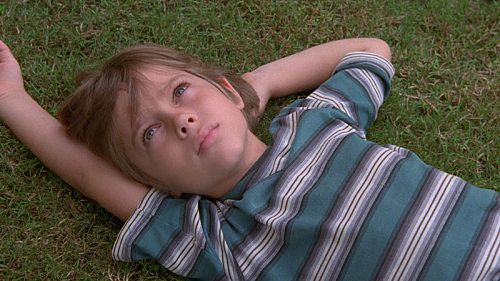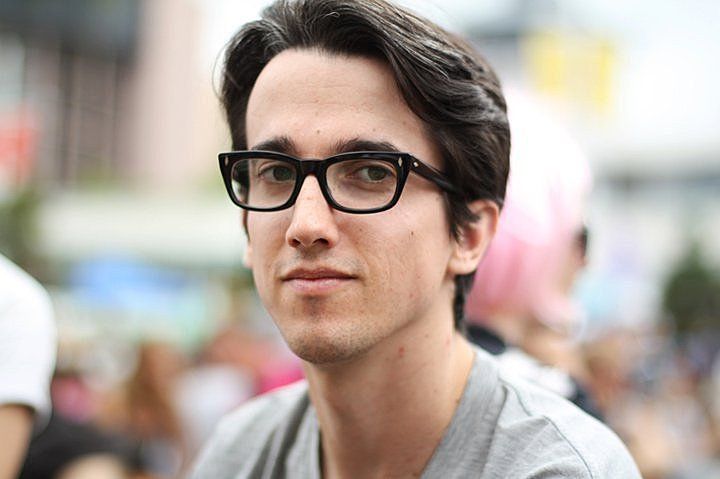Review: Boyhood
Richard Linklater has always captured the passing of time in surprising, iridescent ways - but even by his standards, 'Boyhood' is startling - 12 years in the making, and worth every minute.
T.S. Eliot’s J. Alfred Prufrock measured out his life in coffee spoons. Richard Linklater, in his miraculous new film, marks time with pop songs, haircuts, and an abundance of the other small, fleeting moments that shape a person and create familial bonds. Boyhood is a beautifully life-affirming coming-of-age story told with heart-breaking sincerity. It shares DNA with Linklater’s previous work, and yet stands apart from it—and indeed from most of the rest of the art form—largely due to the dazzling audacity of its construction.
Filming began in 2002, when Linklater’s principal actor, Ellar Coltrane, was just a kid. In the opening scene, the propulsive strumming of Coldplay’s “Yellow” places the film chronologically around the turn of the millennium, as a six-year-old Mason (Coltrane) stares up at the sky in the film’s poster shot. We’re soon introduced to his mother, played by Patricia Arquette; his sister (in a spot of nepotistic casting, she’s played by Lorelai Linklater, the director’s daughter), and his father, played by Ethan Hawke. At film’s end, Mason is 18 years old and heading off to college—where his sister has already been for a year—and his parents are divorced, as they have been for most of his life.
In the preceding two-and-a-half hours, we’ve borne witness to the formation of a personality. We’ve been through his parents’ break-up and his mother’s remarriage—twice, both times to men destined to be abusive alcoholics. Step-siblings and friends have come and gone as the family has moved from town to city, and back to town again. We’ve observed as his teen angst emerges from childish mischief to blossom into a grown-up ennui, complete with adolescent existential crises. We may not witness Mason’s first kiss or see him drink his first beer—two traditional cinematic markers of the creation of a young adult—but what we do see are a multitude of quotidian moments that, stacked atop one another, give a deeper understanding of his character than most obvious signifiers could.
Through all of this, Mason and his family have matured, at intervals, right before our eyes: over an incredible twelve-year period, Linklater reconvened his cast annually to shoot a few days’ footage, adapting the story and writing a bit more script each year to suit the actors’ life experience—and his own. Michael Apted may have done something similar with his ongoing …Up series, but where those films were chiefly ethnographic with perhaps a socio-political bent, Boyhood is pure movie-making. This isn’t cinema vérité; there’s nothing documentary-like about Linklater’s method here. Where any other film would have used enervating montages, Boyhood gives us complete scenes.
Linklater is no stranger to the thematic territory of Boyhood; his key subject has always been the passage of time—think of the Before series—and he has always excelled at exploring this through freewheeling, open-ended conversations, spied on through camerawork that seems so naturalistic you almost forget you’re watching a movie. This happens in Boyhood a number of times, and most memorably unfolds in a virtuosic Steadicam tracking shot as Mason, aged about 16, walks alongside a girl on a bike talking about school; she invites him to a party that’s happening that weekend because one of her friends has a crush on him. On the surface, it’s a scene about nothing—but, just as in the Before series, Linklater combines and juxtaposes this type of scene repeatedly to arrive at nothing less than profundity.
What is new to Linklater, though, is a large-scale production schedule this ambitious. It is, in fact, something almost unmatched in the history of cinema, and especially in American cinema. Its effect is nothing short of magical. The film as an experimental project is interesting for what it has to say about the lives, both on- and off-screen, of its actors. It’s fascinating to think about what else Ethan Hawke was making as he returned each year to the role of itinerant, weekend Dad to Mason and his sister. His character skimming stones across a pond or talking frankly to his kids about safe sex might not seem momentous, but the sweetly honest way they’re depicted here makes them so. The film pinpoints some undeniable truths about parenting, and about being a kid. There is nothing particularly sentimental about the storytelling, and, importantly, Linklater doesn’t judge—or permit a cynical view of—any of his characters. On his fifteenth birthday, Mason is given a shotgun by a Texan grandparent. In many other films, especially American comedy-dramas, this would have been set up as a joke at the grandparent’s expense—“look at this Southern hick giving the boy a gun,” we might be prompted to think—but here, the genuine warmth he evidently feels for Mason is overwhelming. You can’t help but be moved by his expression of love.
Linklater shot in 35mm for continuity purposes: with digital-camera technology advancing as quickly as it has in the past decade, the film would have been an ugly patchwork of image qualities even if he had started with what in 2002 was high-end equipment. Even though it was timed digitally and will only be projected that way, using film stock has, of course, meant that the picture looks stunning the whole way through. The director has made only one slip-up in the writing, but it’s minor enough to be forgiven. There is a small scene in the second act in which a peripheral character—a day labourer, probably intended to be seen as an illegal immigrant—chats to Patricia Arquette’s character about some plumbing work he’s doing for the family. The conversation is forced, and, in the scheme of things, unnecessary to the development of her character. She gives him some advice, and the scene is overall unimportant to the narrative as a whole. His reappearance in the third act, then, is surprising and disruptive to the film’s emotional acuity.
Any film can have a great soundtrack, but the time-capsule nature of Boyhood means it will be seen as a veritable catalogue of modern pop-culture touchstones. Songs by Wilco, the Flaming Lips, Cat Power, the Hives, Arcade Fire, Yo La Tengo, and even Gotye serve the story as background markers of a particular scene’s era, but their secondary effect is to suffuse the film, wonderfully, with little “Oh, that song!” moments. Remember the summer when “Crazy” by Gnarls Barkley wasinescapable? Boyhood will take you back there, briefly. Perhaps this is how baby-boomers felt watching The Big Chill for the first time, packed as it was with Motown singles.
In this way, Linklater generates an authentic, intense nostalgia for the very recent past in a way few other filmmakers would bother to attempt. In some of the the parts of his life that we see, Mason dresses up as a wizard to buy the latest Harry Potter book, plays Pokémon on Gameboy Pocket, and watches Dragon Ball Z. There is certainly nothing universal about these experiences—the film is, of course, aimed at a certain audience—but their appearance here transcends whatever generic qualities they might carry. American pop culture is so pervasive that, when they appear, some of the lines in “Hero” by Family of the Year:
Everyone deserves a chance to
Walk with everyone else
While holding down
A job to keep my girl around
And maybe buy me some new strings
And her and I out on the weekends
And we can whisper things
Secrets from our American dreams
…seem perfectly calibrated to lend emotional heft to the film. It’s the sort of end-credits track that wouldn’t be out of place over the credits of the next American Pie instalment, but the way Linklater deploys it makes it something more.
Because it is told with such earnestness, this film will immediately take its place in cinematic history as a wholly new kind of period piece. It is, to borrow from Emily Gould via Hannah Horvath, the cinematic voice of our generation—or at least a voice of a generation.
NZIFF: Boyhood
D: Richard Linklater (USA, 2014, 164 minutes)
Buy Wellington tickets here


